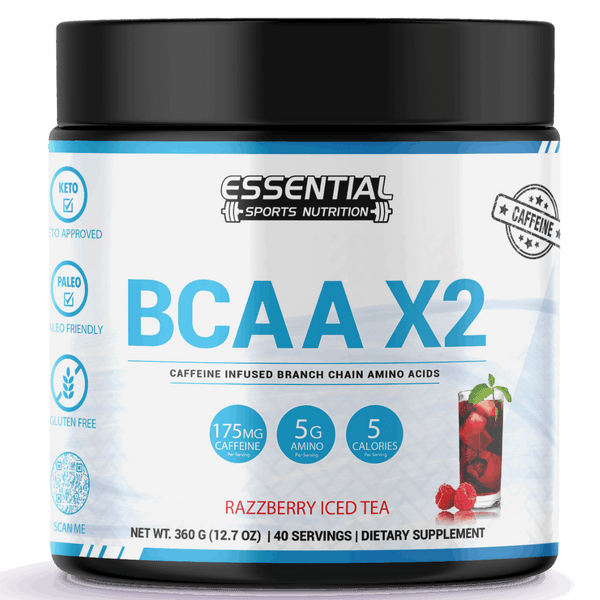Elevate Your Back: The Power of Back Extension Exercises
If you want to master the proper form, grasp the benefits, and discover diverse variations of back extensions, this guide is your go-to for an ideal workout experience. Maintain a neutral spine, engage your core, and focus on controlled movements. Back extensions strengthen muscles, align your posture, and support your lower back, reducing pain and enhancing flexibility. Remember to avoid common mistakes, progress gradually, and incorporate variations for a well-rounded routine. Mastering these techniques will elevate your exercise routine and help you maximize the full potential of back extensions.

Key Takeaways
- Maintain neutral spine and engage core for proper form.
- Strengthen muscles, improve posture, and reduce back pain.
- Incorporate variations for progression and targeting specific muscle groups.
- Focus on controlled movements and gradual intensity increase.
- Use back extension machine with correct alignment and breathing techniques.
Proper Form for Back Extensions
Wondering how to guarantee proper form during back extensions to maximize results and prevent injuries? Maintaining a neutral spine and neck position is crucial. This alignment not only prevents injuries but also ensures that you are targeting the correct muscles effectively. Remember to engage your core muscles and squeeze your glutes throughout the movement. By doing so, you are not only protecting your lower back but also activating the muscles you want to target.
Focus on slow and controlled movements rather than using momentum. This deliberate approach will help you master the technique and avoid any unnecessary strain on your back. When using a back extension machine, adjust it to a 45-degree angle for effective targeting of the lower back muscles. Additionally, ensure that the machine pads are positioned correctly, approximately 2-3 inches below your hip crease, to get the most out of your back extensions. Proper form is key to reaping the benefits of this exercise while minimizing the risk of injury.
Benefits of Back Extensions
When you engage in back extensions, you are not just strengthening your muscles, but also improving your posture alignment and providing essential support to your lower back. By incorporating back extensions into your routine, you can reduce the risk of back pain, enhance spinal flexibility, and boost your overall back strength. These exercises target a network of muscles connected to your spine, leading to increased core stability, better hip flexor strength, and enhanced glute activation.
Improved Posture Alignment
Incorporating back extensions into your routine can greatly strengthen the key muscles supporting your spine to enhance your posture alignment effectively. By targeting the erector spinae muscles, back extensions help reduce the risk of slouching and promote a more upright position. This improved posture alignment enhances the overall mechanics of your body and decreases strain on your neck and shoulders. Common postural issues stemming from weak back muscles can be alleviated through the proper execution of back extensions. Ultimately, the enhanced spinal alignment achieved through these exercises improves movement efficiency.
| Benefits of Improved Posture Alignment |
|---|
| Strengthens erector spinae muscles |
| Reduces risk of slouching |
| Alleviates common postural issues |
Strengthen Lower Back
If you're looking to reinforce your lower back muscles effectively, incorporating back extensions into your routine can be a game-changer. Strengthening the lower back muscles, particularly the erector spinae, is essential for providing support and stability to the spine. You can target and strengthen weak muscles in the lower back region by engaging in back extensions, potentially alleviating low back pain. Additionally, improving the strength of your lower back through back extensions can lead to enhanced posture and better performance in daily activities. Consistent back extension workouts can also boost the endurance and range of motion of the erector spinae. Moreover, these exercises engage muscles in the buttocks, hips, and shoulders, contributing to overall core and posterior chain strength.
Common Mistakes to Avoid
One common mistake to avoid during back extensions is hyperextending the lower back, as this can lead to strain and potential injury. To guarantee you perform back extensions safely and effectively, consider the following:
Choose the Right Weight: Opt for a weight that challenges you without compromising your form. Selecting an excessively heavy weight can strain your back and lead to injuries.
Focus on Controlled Movements: Avoid using momentum to swing yourself up during back extensions. Instead, concentrate on controlled movements to engage the targeted muscles fully.
Maintain Proper Alignment: Assure your body and equipment are correctly aligned to target the intended muscles. Misalignment can lead to strain in other areas and reduce the effectiveness of the exercise.
Techniques for Holding Form
To maintain proper form during back extensions, focus on aligning your body correctly, engaging your core muscles, and using proper breathing techniques. Ensuring your body is in the right position, activating your core for stability, and coordinating your breath with each movement are key aspects of holding form throughout the exercise. By paying attention to these techniques, you can optimize the effectiveness of back extensions while reducing the risk of injury.
Proper Body Alignment
Properly aligning your body during back extensions is essential for preventing injuries and maximizing the effectiveness of your workout. To ensure proper body alignment, follow these key techniques:
- Maintain a Neutral Spine and Neck Position: Prevent injury and optimize muscle engagement by keeping your spine and neck in a neutral position throughout the exercise.
- Position Machine Pads Correctly: Place the machine pads 2-3 inches below your hip crease for effective waist folding and extension.
- Focus on Waist and Pad Alignment: Proper alignment of your waist and the machine pads is vital for targeting lower back muscles and maximizing the benefits of the exercise.
Engaging Core Muscles
Engage your core muscles effectively by focusing on drawing your navel towards your spine during back extensions. This action helps maintain a neutral spine alignment, activating the core muscles efficiently. By contracting the abdominal muscles and squeezing the glutes, you stabilize your core and support the lower back, ensuring proper form throughout the exercise. Proper core engagement is essential as it provides a strong foundation for back extension movements. Keeping your core muscles engaged not only helps prevent injury but also maximizes the benefits of the exercise. Practice these techniques consistently to improve your back extension form and overall strength.
Breathing Techniques
When performing back extensions, remember that mastering proper breathing techniques is key to maintaining form and maximizing the benefits of the exercise. Here are some tips to help you with your breathing:
- Inhale before starting the movement and exhale as you reach the top position.
- Controlled breathing stabilizes the core and helps maintain proper form.
- Exhaling during the exertion phase can enhance muscle engagement and prevent unnecessary strain on the body.
Variations to Enhance Back Extensions
Enhancing your back extensions through various variations can provide a more thorough workout for your back and core muscles. By incorporating different alternatives into your routine, you can target specific muscle groups, improve balance, flexibility, and overall strength. Here are some alternatives to contemplate:
| Variation | Benefits | Targeted Muscles |
|---|---|---|
| Stability Ball Reverse Extensions | Engages stabilizer muscles; improves balance | Core, Lower back |
| Cat-Cow Pose Variation | Targets flexibility in the spine; enhances mobility | Entire back muscles |
| Supermans Exercise | Strengthens lower back and glutes effectively | Lower back, Glutes |
These alternatives offer a range of benefits, from isolating specific muscles to improving overall flexibility and balance. Incorporating these alternatives into your back extension routine can help you achieve a more extensive workout and enhance your overall back and core strength.
Engaging Different Muscle Groups
To effectively target different muscle groups during back extensions, consider incorporating variations that focus on specific areas of your back and core. By engaging various muscles, you can enhance the benefits of this exercise and work towards a stronger, more stable back and core. Here are some ways to engage different muscle groups during back extensions:
Focus on the Lower Back: To target your lower back, perform back extensions with a full range of motion, ensuring you lift your chest and legs off the ground simultaneously.
Target the Glutes: To activate the glutes more effectively, incorporate hip hyperextension movements into your back extension routine. Squeeze your glutes at the top of the extension to maximize engagement.
Engage the Hamstrings: To work the hamstrings, focus on controlled eccentric movements as you lower your torso back down after each extension, feeling the stretch in your hamstrings.
Safety Tips for Effective Workouts
Prioritize your safety by implementing these essential tips for effective workouts. To begin, always start with a proper warm-up routine before engaging in back extension exercises. This prepares your body for the upcoming movements, reducing the risk of injury. During the workout, focus on controlled movements to avoid any jerky motions that could strain your muscles or back. Remember to maintain a neutral spine and engage your core muscles throughout the exercises for best results and to protect your back.
As you progress, gradually increase the intensity and resistance in your back extension exercises. This incremental challenge helps strengthen your muscles effectively over time. It's important to listen to your body's signals during the workout. If you experience any discomfort or pain, adjust your form or intensity accordingly to prevent injury and ensure a safe and productive session. By following these safety tips and being mindful of your body's needs, you can enjoy the benefits of back extensions while minimizing the risk of harm.
Progression in Back Extension Exercises
As you advance in your back extension exercises, gradually increasing the range of motion and resistance is essential for challenging your muscles effectively. Progression in back extension exercises is vital for building strength and endurance in the lower back and posterior chain. Here are some tips to help you progress safely:
Gradually Add Weight or Resistance: Start by incorporating light weights or resistance bands into your back extensions. Slowly increase the weight or resistance over time to continue challenging your muscles.
Increase Repetitions or Sets: As you become more comfortable with the exercise, consider adding more repetitions or sets to your routine. This gradual increase can help improve muscle endurance and overall strength.
Try Advanced Variations: Once you feel confident with basic back extensions, consider trying more challenging variations like stability ball back extensions or weighted back extensions. These variations can enhance the effectiveness of the exercise and provide a new challenge for your muscles.
Remember to monitor your progress closely and adjust the intensity of your workouts based on your individual capabilities to ensure a safe and effective progression in your back extension exercises.
Incorporating Back Extensions Into Routine

When incorporating back extensions into your routine, focus on proper form and gradual progression to maximize the benefits for your lower back, core, and glutes. Start by incorporating back extensions 2-3 times weekly, ensuring you maintain a neutral spine throughout the movement. Begin with a manageable number of repetitions and sets, gradually increasing as your strength improves.
Integrating back extensions into your routine can help improve your posture, reduce back pain, and enhance stability during daily activities. Strengthening the erector spinal muscles and increasing your spinal range of motion can also boost your overall back endurance.
Consider including variations of back extensions, such as stability ball or floor exercises, to target the posterior chain from different angles. This diverse approach will contribute to balanced muscle development, resulting in a stronger and more resilient back over time. Stay consistent and listen to your body to reap the full benefits of incorporating back extensions into your workout routine.
Conclusion

To sum up, mastering proper form, understanding the benefits, and exploring variations of back extensions can greatly enhance your workout routine. By avoiding common mistakes, holding form correctly, and engaging different muscle groups, you can maximize the effectiveness of this exercise. Remember to prioritize safety, progress gradually, and incorporate back extensions consistently into your workouts to see the best results. Keep pushing yourself, stay focused, and enjoy the journey to a stronger, healthier back.
Benefits of Back Extension Exercises, Muscles Worked, and Variations FAQs
Q: What muscles are worked during back extensions?
A: Back extensions primarily work the erector spinae muscles in the lower back and the glutes and hamstrings.
Q: What are some variations of back extensions?
A: Some variations of back extensions include hyperextensions, dumbbell back extensions, bodyweight back extensions, and machine back extensions.
Q: What are some alternatives to traditional back extensions?
A: Alternatives to traditional back extensions include exercises like deadlifts, floor back extensions, and back extensions with weights.
Q: How do back extension exercises help strengthen your back?
A: Back extension exercises help strengthen your back by targeting the erector spinae muscles and promoting muscle endurance and stability in the lower back region.
Q: Can back extensions be done at home without any equipment?
A: Back extensions can be done at home without any equipment by performing bodyweight back extensions or using a weight plate for added resistance.
What Is the Proper Form for Back Extensions?
Keep a neutral spine and neck, engage your core, and focus on controlled movements when doing back extensions. Avoid using momentum and adjust the machine to a 45-degree angle. Proper form is essential for safety and effectiveness.
Q: What Are Back Extensions Benefits?
A: Back extensions boost strength and posture, reduce injury risks, enhance body awareness, and target key muscle groups like the lower back, glutes, and hamstrings. These exercises also promote improved flexibility and spine health.
Q: How do you properly use a back extension machine?
A: To properly use a back extension machine, adjust it to a 45-degree angle. Position the pads below your hip crease, engage your core, and lift yourself up with control. Keep your spine neutral, avoid momentum, and focus on slow movements for safety.
Q: What Are the Benefits of Static Back Extensions?
A: Static back extensions boost strength and posture. Engage your erector spinae muscles to support your spine, enhance stability, and reduce injury risk. Regular practice also increases body awareness, improves flexibility, and promotes proper alignment.




























